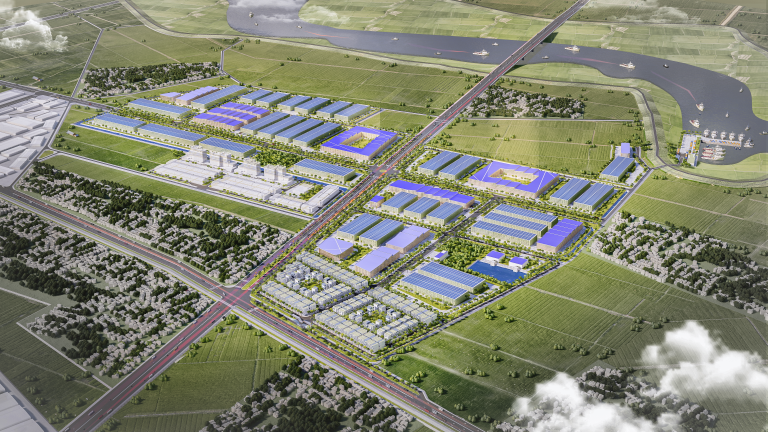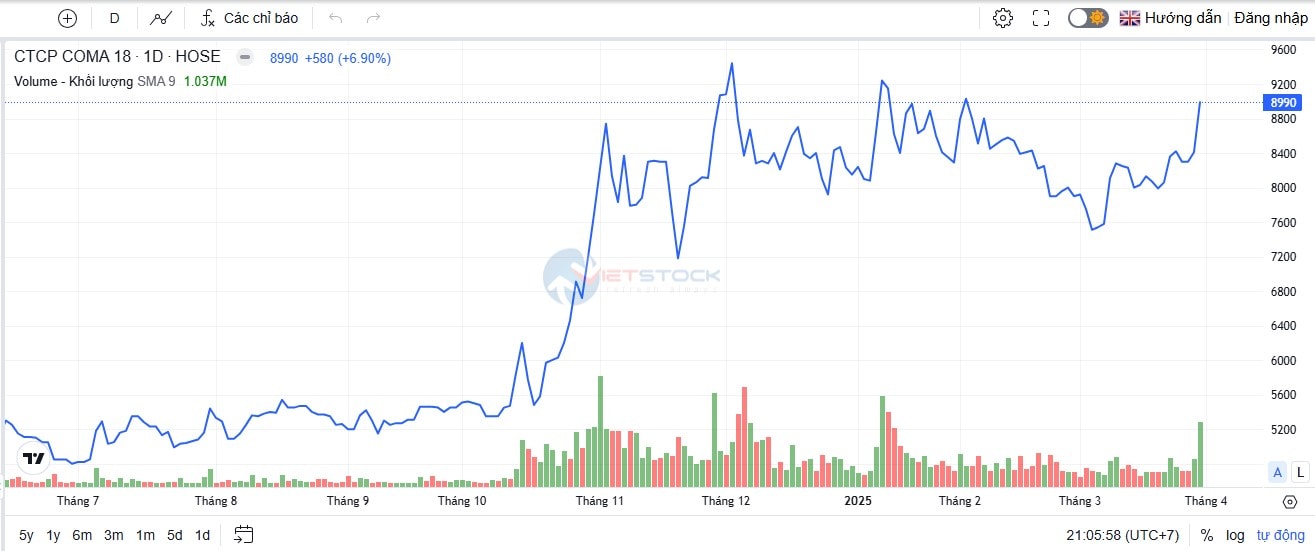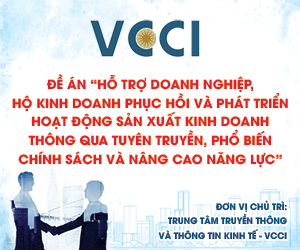Where does CIG’s ambition come from?
In 2025, COMA 18 JSC (HoSE: CIG) has set an ambitious growth target, driven by high expectations for the Kim Thành Industrial Park project.
According to the recently released documents for the 2025 Annual General Meeting of Shareholders, CIG has proposed an ambitious business plan for 2025, targeting revenue of VND 1,050 billion—an explosive increase of over 1,005% compared to 2024—and after-tax profit of VND 290 billion, up more than 360% from its 2024 results.

COMA 18 expects the Kim Thành Industrial Park to generate a revenue breakthrough in 2025
This ambitious goal is mostly predicated on the expected income from the Kim Thành Industrial Park project in the province of Hải Dương. Leasing industrial park infrastructure is anticipated to provide the majority of the estimated income, or VND 850 billion, or almost 81% of total revenue. The remaining 200 billion VND will be derived via agricultural trade and building contracts.
The project known as Kim Thành Industrial Park is over 165 hectares in size. Nearly 15 years ago, in October 2010, the People's Committee of Hải Dương Province authorized it with a precise layout at a size of 1/500. However, the business is still working on Phase 2 and has just finished the land clearing compensation for Phase 1.
In 2025, the company plans to apply for a construction permit and start developing infrastructure for Phase 1 to attract secondary investors. It also aims to complete land clearance compensation in Vũ Dũng Commune, finish infrastructure construction, hand over land to secondary investors, and launch its sales plan.
In terms of business results, CIG posted revenue of over VND 95 billion in 2024, achieving 63.5% of its target. After-tax profit exceeded VND 54.4 billion, a significant turnaround from a loss of more than VND 7 billion the previous year.
The business performance of the corporation has been unstable since 2007. Despite reaching a record sales of around VND 340 billion in 2008, CIG only made about VND 4.5 billion in net profit. The business suffered six years of losses starting in 2010, with 2020 seeing the biggest loss at over VND 175 billion. The total damages have therefore exceeded VND 300 billion.
In addition, the business recently reported that 19.5 million of the 25 million shares it had planned to issue were successfully issued, collecting VND 195 billion.
Initially, CIG aimed to raise VND 250 billion—VND 175 billion to inject into the Kim Thành project and VND 75 billion to repay part of its loan principal at PVcomBank – Thăng Long Branch.
However, since only VND 195 billion was raised, the capital use plan has been adjusted. Under the new plan, CIG will allocate VND 95 billion for construction at Kim Thành Industrial Park, over VND 52.4 billion to repay debt to Corporation 36, VND 5.3 billion for tax arrears, and over VND 42.2 billion to partially repay loans at PVcomBank – Thăng Long Branch.

On the market, right after the ambitious 2025 business plan was announced, CIG shares hit the daily limit, rising to VND 8,990 per share.
Returning to CIG’s bold 2025 business goals, it is evident that the company’s expectations for a revenue surge from the Kim Thành Industrial Park align with the overall positive outlook for the industrial real estate sector in 2025.
According to Bảo Minh Securities (BMSC), in 2024, demand for industrial land across provinces and cities remained high thanks to strong FDI inflows. Occupancy rates reached 68% in the North and 82% in the South. Consequently, average industrial land rental prices rose 8% year-on-year to USD 142/m²/lease cycle in the North and 3% to USD 195/m²/lease cycle in the South.
BMSC believes that positive legal reforms will help attract more FDI. The Investment Support Fund is expected to be finalized soon, helping to mitigate the impact of the Global Minimum Tax on foreign investors. Additionally, the amended Investment Law, effective January 15, 2025, could simplify administrative procedures and streamline approval processes for new industrial park projects.
Looking ahead to 2025, BMSC forecasts that industrial real estate businesses will directly benefit from continued strong FDI inflows into Vietnam.
Similarly, FPTS Research projects that land lease demand will maintain its growth trajectory in 2025, driven by macroeconomic factors and Vietnam’s existing advantages. FPTS expects Vietnam’s 2025 FDI inflow to grow 6.6% year-on-year, partly fueled by a potential "Trump 2.0" wave that could further accelerate the "China 1" strategy, from which Vietnam is expected to benefit.
Trần Quang Trung, Business Development Director at OneHousing, noted that Vietnam is attracting high-quality FDI, with many large corporations investing in the market. This provides a major boost to the real estate sector, especially industrial parks.
According to Mr. Trần, a single large corporation investing in Vietnam can bring along numerous supporting companies. However, not all of them opt for large-scale, well-developed industrial parks.
"Currently, several industrial parks in provinces like Hải Dương, Hưng Yên, and Bắc Giang are attracting tenants from Hong Kong and China due to competitive rental prices. This indicates that the industrial park market is thriving, creating job opportunities, raising incomes, and promoting sustainable economic growth," said Mr. Trần Quang Trung.
While the overall outlook is positive, CIG’s ambitious targets still depend on the progress of implementation, particularly legal procedures and construction permits for the project.








